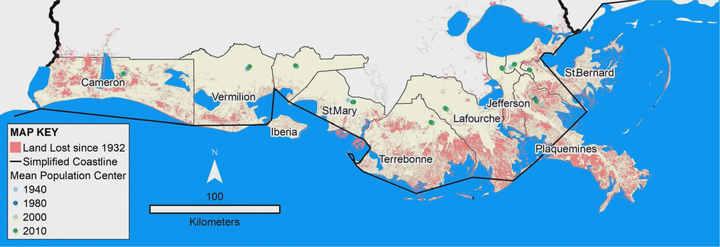No landward movement: examining 80 years of population migration and shoreline change in Louisiana

Abstract
Louisiana lost nearly 5,000 km2 of its coastal land area due to relative sea level rise (including local, regional, and global factors driving relative sea level change) since 1932, mirroring both the hazards associated with sea level rise and the time horizons of sea level rise impacts expected this century. This represents an opportunity to examine the relationship between long-term population changes and shoreline change. Based on detailed land change data for the period 1932–2010 and a small area population estimation technique for the period 1940–2010, we examine intra-parish population changes in relation to shoreline changes for the one million plus residents living in the ten coastal parishes of Louisiana. We find that since 1940, only two of the ten coastal parishes exhibited landward population movement, which we define as movement perpendicular to the shoreline, exceeding 1 km. Three parishes exhibited seaward population movement in excess of 1 km. Overall, we find very little net intra-parish landward population movement for the region. Our findings suggest that coastal Louisiana’s historical population has not moved in concert with observed shoreline encroachment. We also find a potential tipping point related to population migration when a neighborhood loses at least 50% of its land area. Our findings suggest that this lack of landward population movement could be attributable to either localized adaptation strategies or migrations to other landward areas.